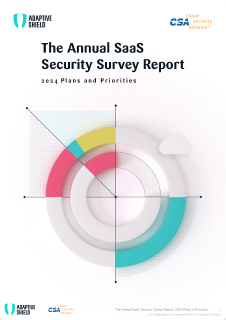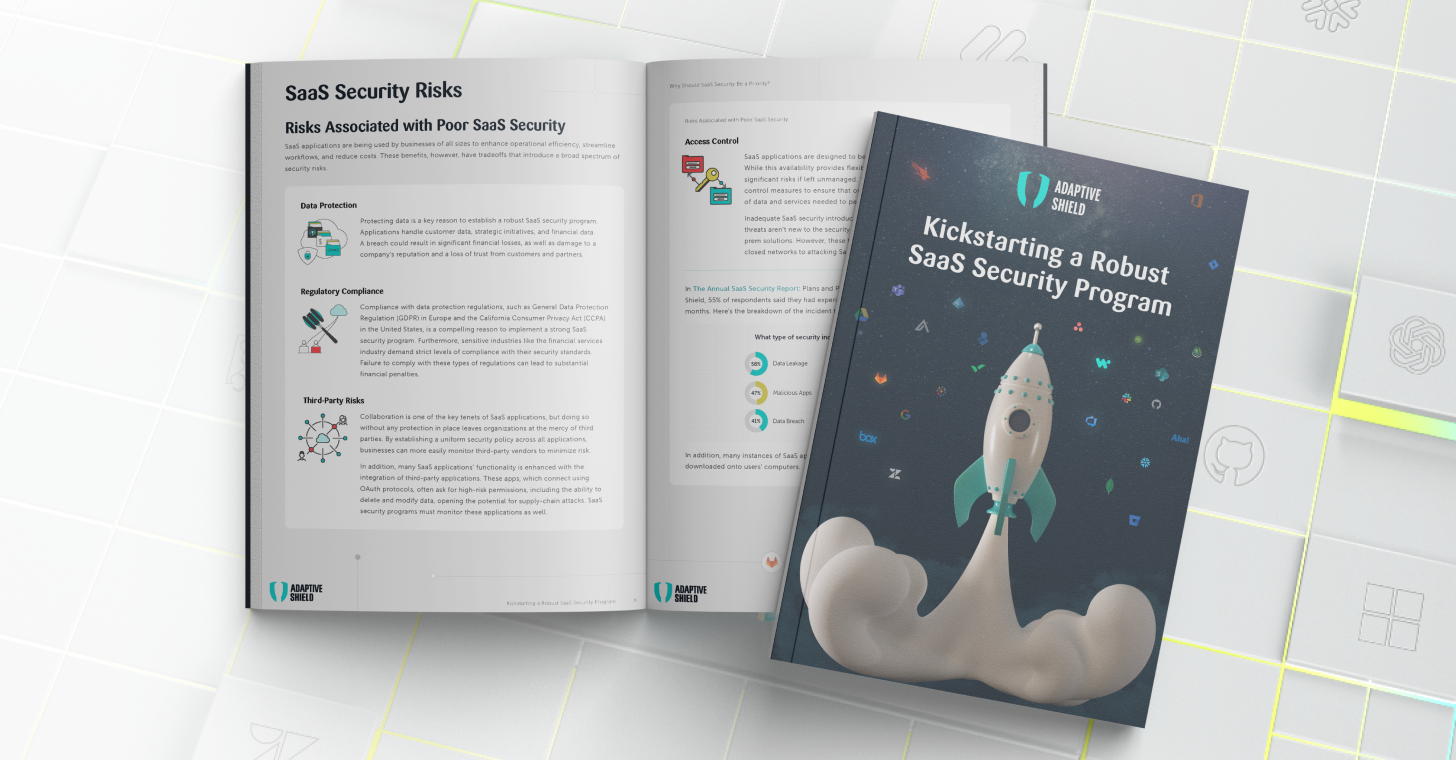SaaS sprawl is one of the newer terms in the market today, however, its exact definition can be debated. SaaS sprawl is the uncontrolled growth of SaaS applications which manifests in two ways: 1) SaaS adoption and 2) SaaS-to-SaaS access. This blog will define both as well as discuss the SaaS security challenges they each bring.
What is the Application Adoption SaaS Sprawl?
Take a moment to think about all the apps you use throughout your work day – it’s probably anywhere from a handful of apps to dozens. How many, if any, of those apps were installed after receiving your organization’s security team’s approval? There you have it, the SaaS sprawl of application adoption.
The SaaS sprawl of application adoption occurs when an organization is using an excessive number of SaaS apps that have been poorly integrated without the security team’s knowledge. The sprawl quickly grows to the point that it’s near impossible for security teams to manage all the apps effectively, causing significant risk for the organization.
What Are the Challenges of the Application Adoption SaaS Sprawl?
The challenges of the SaaS sprawl in application adoption can be boiled down to the following three pain points.
Inability to Effectively Manage Security Across the SaaS Sprawl
Security teams are faced with the responsibility to secure every SaaS app security setting and configuration according to company policy and compliance frameworks. With the increasingly large magnitude of applications, it’s near impossible for teams to keep track of which applications have access to sensitive data and ensure that each one is properly secured.
The Lack of a Shared Language Across Apps
To add to the challenge is the fact that there is no shared language across apps. Each app uses its own security language preventing security teams from creating a unified playbook that applies to all SaaS apps. For example, one application may refer to user roles as “groups,” while another may call them “teams.” This inconsistency can lead to confusion and misinterpretation, making it difficult to implement a cohesive security strategy.
Poor Communication Between App Owners and the Security Team
Another challenge in securing the SaaS sprawl is the communication between app owners and the security team, otherwise known as the app admin paradox. App admins are often business department users and sit outside the view of the security team. These admins are not focused or trained in SaaS security yet they leverage much of the power required to properly secure an app.
Effective communication between app owners and security teams is crucial to managing security risks associated with SaaS sprawl. It requires a collaborative approach that involves ongoing communication, education, and training to ensure that all stakeholders are aware of their responsibilities and working together to mitigate security risks.
What is the SaaS Sprawl of SaaS-to-SaaS Access?
In today’s workplace, SaaS app adoption doesn’t end with users installing their core apps such as Salesforce, Monday.com, or Hubspot. Users are constantly connecting third-party apps to their core SaaS stack. Companies using Google Workspace with 10,000-20,000 employees average nearly 14,000 unique connected applications. In order to connect, users must grant an app requested permissions. This SaaS-to-SaaS access happens outside the visibility of the security teams and creates a web of SaaS apps known as the SaaS sprawl.
What Are the Challenges of the SaaS-to-SaaS Access SaaS Sprawl?
There are three primary challenges related to connected third-party applications.
The Risk of High Permission Scopes
When third-party apps integrate with core SaaS apps, they request specific scopes. These scopes hand over a lot of power to the apps. The 2023 SaaS-to-SaaS Access Report found that 39% of apps connected to Microsoft 365 had high-risk permission access. What contributes to this challenge is the fact that users are typically unaware of what permissions they are granted and the security risks that follow.
The Impossible Volume of Connected Apps
Research shows the number of apps per user does not stabilize after a certain threshold. The more third-party apps are added, the harder it is for security teams to keep visibility which in turn leads to blindspots. This lack of visibility creates security vulnerabilities and compliance concerns.
The Inability to Create Enterprise-Wide Policies
One aspect of this challenge is defining a unified set of criteria for evaluating and approving SaaS applications. Different teams may have varying requirements and preferences, making it difficult to establish standardized criteria for selecting and onboarding applications. Additionally, organizations need to consider factors such as security, data privacy, compliance, integration capabilities, and scalability when formulating these policies.
How Can Organizations Manage Their SaaS Sprawl?
To effectively manage SaaS sprawl, whether it’s the rapid adoption of SaaS apps or the growing connections of third-party apps, organizations should take a proactive approach. Security teams can implement a SaaS Security Posture Management (SSPM) solution to gain contextualized insights into the state of their SaaS sprawl.
An SSPM solution automates the process that a security team would otherwise have to complete manually to secure their SaaS apps. This automation helps organizations streamline their SaaS app security and improve efficiency by ensuring consistent security posture across their SaaS stack. Its in-depth visibility enables security teams to better prevent emerging threats and enhance their overall security. Organizations can utilize a SSPM checklist to ensure they choose the right SSPM with all the critical use cases.




















